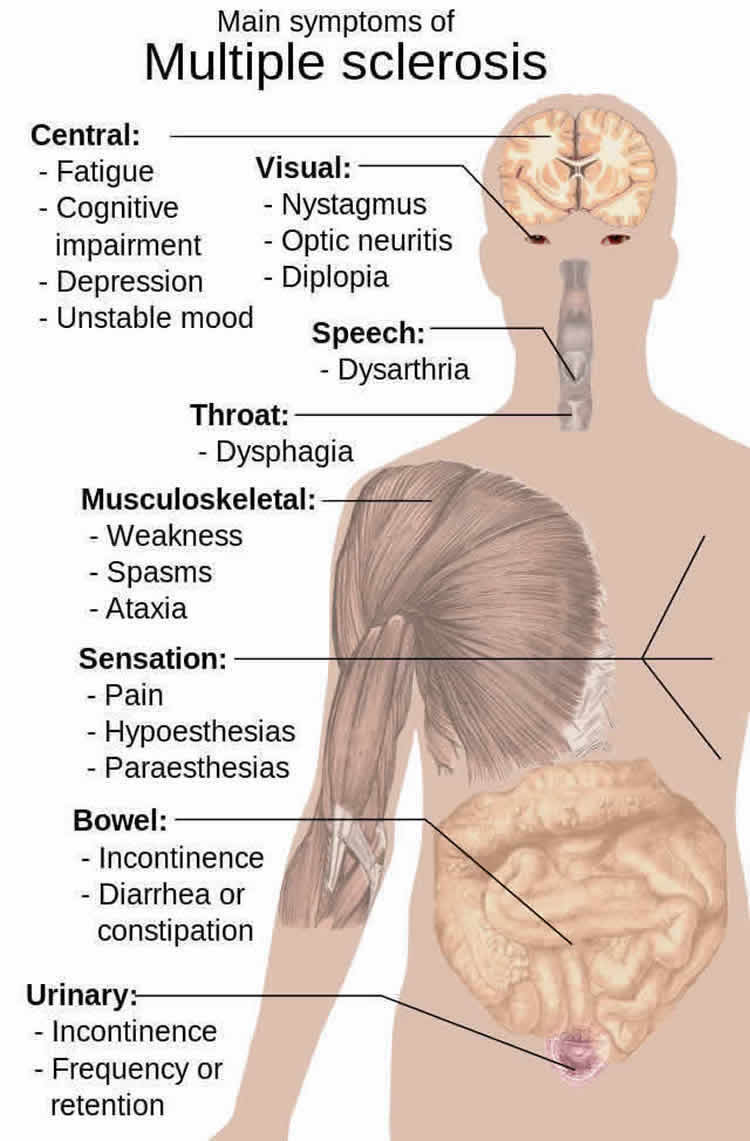Summary: Researchers report environmental conditions may trigger structural changes to myelin sheaths, forcing the onset of multiple sclerosis.
Source: AFTAU.
A new Tel Aviv University study finds that certain environmental conditions may precipitate structural changes that take place in myelin sheaths in the onset of multiple sclerosis (MS). Myelin sheaths are the “insulating tape” surrounding axons; axons carry electrical impulses in neurons.
The research demonstrates that myelin sheaths undergo structural transitions when triggered by changes in local environmental conditions, such as salt concentration (salinity) and temperature. These transitions, according to the study, render the body vulnerable to autoimmune attacks that can lead to MS.
The research was led by Prof. Roy Beck of TAU’s School of Physics and Astronomy and conducted by Rona Shaharabani, a doctoral student in Prof. Beck’s lab, and Maor Ram-On, a doctoral student in Prof. Ronen Talmon’s lab at the Technion Institute of Technology. It was published in the Proceedings of the National Academy of Sciences of the USA (PNAS).
Earlier research by Prof. Beck revealed that changes in the structure of myelin sheaths are a factor in the development of MS.
“Current therapeutic approaches have focused on the autoimmune response without identifying the culprit,” says Prof. Beck. “We have found that under certain environmental conditions, such as elevated salinity and temperature, myelin sheaths protecting neurons undergo structural transitions consistent with pathological myelin structures in multiple sclerosis.”
Physiological conditions are regulated in the body itself, but temperature and salinity are subject to localized external changes. The results presented in the study suggest that even minor changes in these conditions may trigger multiple sclerosis.
“The myelin sheaths undergo structural transitions at the molecular level when affected by different environmental conditions. These small modifications create structural instabilities that allow the immune system to attack neurons,” says Shaharabani.
The researchers used X-ray scattering and cryogenic transmission electron microscopy (cryo-TEM) to track and measure the myelin sheaths in healthy and diseased animal models. They found that healthy lamellar membranes spontaneously morphed into different pathological structures of nano-scale tubes called inverted hexagonal shapes.

“These results highlight that local environmental conditions are critical for myelin function. These conditions should be considered as alternative possibilities for early diagnosis and as a means of avoiding the onset of demyelination,” says Shaharabani. “Since we believe that these structural modifications result in myelin membrane vulnerability to the immune system attacks, it can help explain the causes of MS and perhaps pave the way for a treatment or a cure.
“Since we now have a new biophysical understanding to investigate the degradation of myelin sheaths, we are following up on other candidates that can induce such structural transition. There are several molecular candidates, including specific proteins and other alterations in the myelin’s fatty acids, that are relevant, which may unravel further insights to fight multiple sclerosis and related disorders,” Shaharabani concludes.
Source: George Hunka – AFTAU
Publisher: Organized by NeuroscienceNews.com.
Image Source: NeuroscienceNews.com image is in the public domain.
Original Research: Open access research for “Pathological transitions in myelin membranes driven by environmental and multiple sclerosis conditions” by Rona Shaharabani, Maor Ram-On, Yeshayahu Talmon, and Roy Beck in PNAS. Published September 18 2018.
doi:10.1073/pnas.1804275115
[cbtabs][cbtab title=”MLA”]AFTAU”Environmental Factors May Trigger Multiple Sclerosis Onset.” NeuroscienceNews. NeuroscienceNews, 16 October 2018.
<https://neurosciencenews.com/multiple-sclerosis-environment-10029/>.[/cbtab][cbtab title=”APA”]AFTAU(2018, October 16). Environmental Factors May Trigger Multiple Sclerosis Onset. NeuroscienceNews. Retrieved October 16, 2018 from https://neurosciencenews.com/multiple-sclerosis-environment-10029/[/cbtab][cbtab title=”Chicago”]AFTAU”Environmental Factors May Trigger Multiple Sclerosis Onset.” https://neurosciencenews.com/multiple-sclerosis-environment-10029/ (accessed October 16, 2018).[/cbtab][/cbtabs]
Abstract
Pathological transitions in myelin membranes driven by environmental and multiple sclerosis conditionsh
Multiple sclerosis (MS) is an autoimmune disease, leading to the destruction of the myelin sheaths, the protective layers surrounding the axons. The etiology of the disease is unknown, although there are several postulated environmental factors that may contribute to it. Recently, myelin damage was correlated to structural phase transition from a healthy stack of lamellas to a diseased inverted hexagonal phase as a result of the altered lipid stoichiometry and low myelin basic protein (MBP) content. In this work, we show that environmental conditions, such as buffer salinity and temperature, induce the same pathological phase transition as in the case of the lipid composition in the absence of MBP. These phase transitions have different transition points, which depend on the lipid’s compositions, and are ion specific. In extreme environmental conditions, we find an additional dense lamellar phase and that the native lipid composition results in similar pathology as the diseased composition. These findings demonstrate that several local environmental changes can trigger pathological structural changes. We postulate that these structural modifications result in myelin membrane vulnerability to the immune system attacks and thus can help explain MS etiology.






